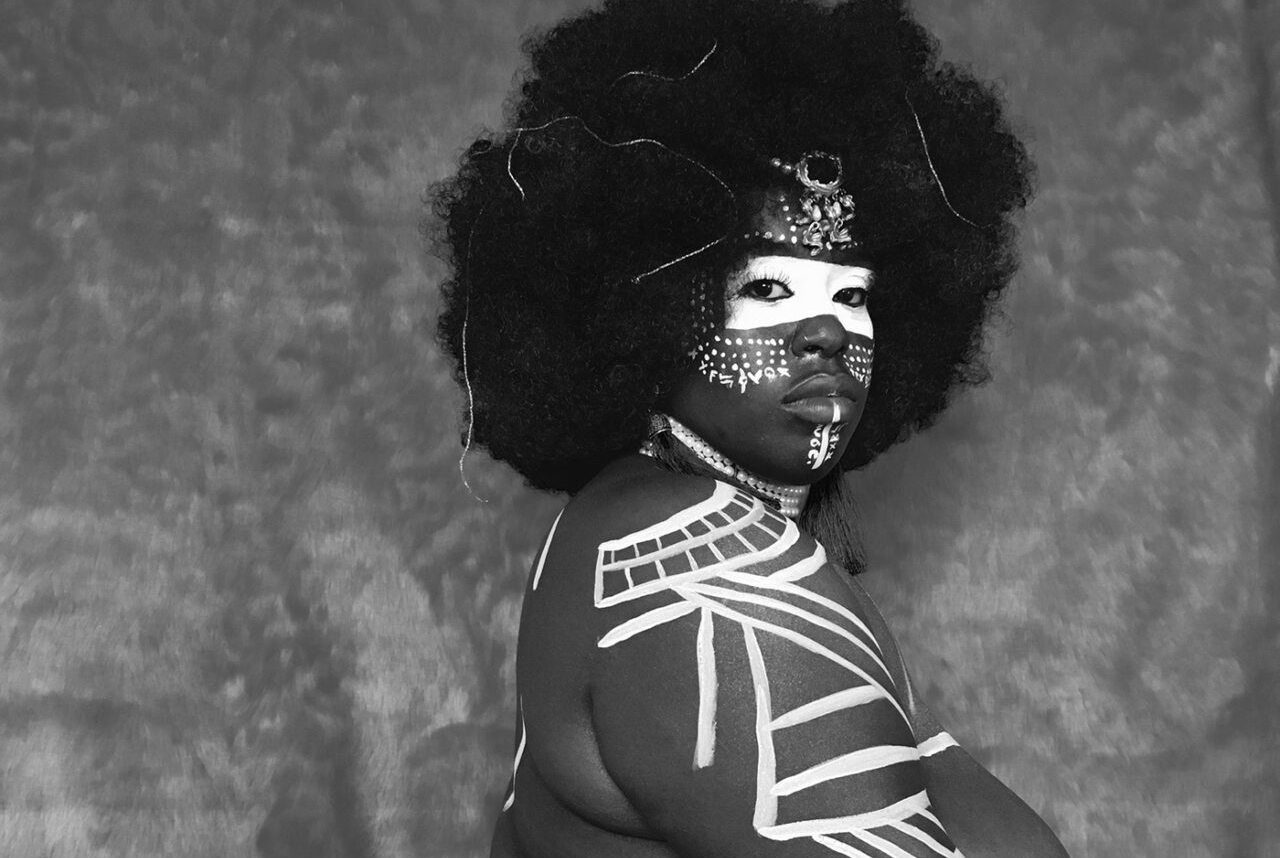
DeLovie Kwagala, the first non-binary queer photographer and social activist in Uganda, celebrates the power of the Pussy through portraiture. In Ukraine, Artem Humilevskyi learns self-acceptance by choosing to bare all. Meanwhile, in the US, Mikael Owunna represents Black bodies as immortal, limitless, and divine. Manon Ouimet uses the therapeutic power of photography to help people living with disfigurement on their path to healing and self-discovery. Plus, body-positive photography from thirteen activists who turn the camera on themselves.

13 Artists & Activists Pioneering the Genre of Body Positive Photography
In 2018, Astra Marie teamed up with the artist Nneka GiGi and creative director and editor Zachary Bxllion to create the portrait above. A few days after the shoot, she was waiting on the metro with a friend when she noticed an email pop up on her phone: the images were ready. “When I saw this one, I was speechless for a moment,” she remembers. “Tears just started falling–man, I was proud.”
She shared the image on Instagram with a seven-word caption: “I used to think I wasn’t beautiful.”
“I never understood how beautiful I was until that moment captured,” she says. “I saw the full image of my body and how beautiful my rolls stacked, my dark brown skin still shining, even in black and white. I got stuck when looking into my eyes and expression my face was so powerful yet soft and fierce. I’m all over beautiful.”

‘I Am Womxn’: DeLovie Kwagala, aka Papa De, Celebrates Power and Pride Beyond the Patriarchy
For the artist DeLovie Kwagala, the initial seeds that would later blossom to become the project I Am Womxn were planted at the start of the #MeToo movement. “I watched a revolution of womxn regaining their confidence and voices, even when all the odds were placed against them,” they remember now. “I watched them take their power back, both online and in real life. For the first time, it was okay to speak up.”
“I was motivated to create something that would be a constant reminder of the power of the Pussy. At the same time, I wanted to defy social standards around body image and champion the inclusion of those that are constantly questioned about the validity of their womxnhood. The photographs became an affirmation that we all stand together.”

Mikael Owunna Celebrates The Beauty and Transcendence of the Black Body
Mikael Owunna‘s work transforms his models’ bodies into a tapestry of stars, immense and everlasting. In the process, he evokes the mythologies and histories passed down from generation to generation as part of the Igbo and Dogon traditions.
To create his glittering constellations, the artist starts by hand-painting his models’ bodies with fluorescent paint (each person chooses the colors they want) before moving into complete darkness. From there, he illuminates them with a self-engineered camera flash, designed to transmit only ultraviolet light.
“At its genesis, this project began as a response to images of police killings of Black people, as I sought to transfigure Black bodies from sites of death and state violence into vessels of eternal life,” Owunna remembers.

Artem Humilevskyi Embraces Vulnerability and Resilience Through Body-Positive Photography
Before he released GIANT, a series of self-portraits, Artem Humilevskyi’s finger hovered over the “publish” button for six hours. It was a personal project that required him to bare all, both physically and philosophically, and he had no way of knowing how people might react. In the end, it was worth the risk.
“This project, on the whole, is about self-acceptance,” he tells me. “We all want to look better than we really are, and when we do not meet those expectations, we begin to hate ourselves for our flaws. I wanted to understand who I am and what I am in reality. I wanted to stop sexualizing the body and just see it as a body, an arm as an arm, a leg as a leg. This allowed me to accept myself, and later, to love myself.”

Manon Ouimet Uses Photography as a Therapeutic Tool for People Living with Disfigurement
“The goal is to move away from notions of pity and disempowerment and to portray courage, honesty, beauty and strength. The therapeutic aspect also felt important. Many of the people I photographed had not had their picture taken for a long time and were terrified of looking at themselves. It’s daunting enough thinking that you’d be photographed naked, let alone after an alteration that left you questioning your visual identity.
“So to work with people to continue this process of healing and let them see their beauty the way I saw it was incredibly special and so many people I photographed talked about this afterwards. Essentially there is nothing shameful or bizarre about being naked. All of us have a body, all of us different. It feels exciting to be displaying a series of people I had the pleasure of meeting and getting to know in this way.” – Manon Ouimet
The post Body Positive Photography: The Artists Defining a Genre appeared first on Feature Shoot.



Leave a Reply